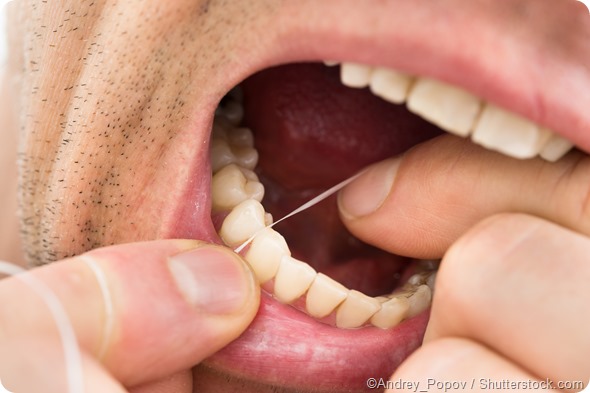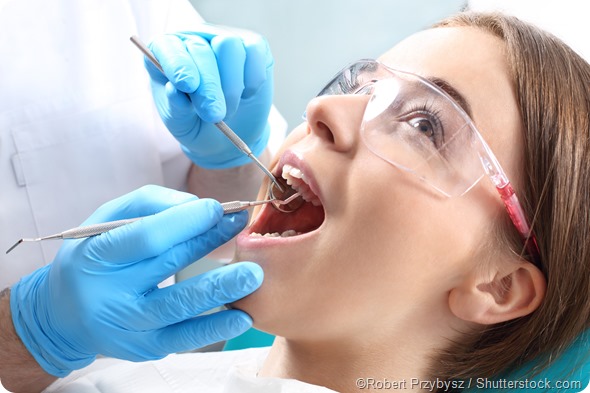By Dr. Tim Pruett, DMD
Even if you didn’t read the Associated Press report on the “weak evidence” supporting flossing last month, you likely saw parts of the media storm that followed it and continue to roll in. A myriad of articles from journalists either backing up or shutting down the claim that there is no benefit to flossing. Tweets and Facebook posts from patients who were either grateful to never have to pick up a string of floss again, or defending their nightly regimen and pointing out their gum health.

The responses I’ve read from professional organizations, groups, and noted experts have only included statements and guidelines. After 12 years of educating chairside as a dentist, I know that for a patient to be on your team, you can’t simply make statements, dictate guidelines and expect progress. People need to be educated interactively so they can understand treatment options, consequences and outcomes. It allows the patient to make an informed decision concerning their health and care.
Missing this critical educational interaction may be the reason for Flossgate in the first place: patients growing tired of being “pushed” to floss without being engaged as to why, given any evidence as to the potential benefits or side effects, or shown the proper technique.
At its core, the dental profession is based in prevention. It’s foundational to everything we do, and our entire system of oral hygiene promotion from pediatric to geriatric dentistry is organized in this way.
From consultations with new moms and their babies to prevent decay caused by poorly timed bottle feeding habits, to medication reviews with elderly patients to make sure they understand the oral complications associated with medication-induced dry mouth. These are among the many preventive conversations the dental profession has with patients on a daily basis. We continually combine both clinical observations and empirical data to develop best practice approaches for preventing oral disease.
As a preventative approach, dentists and hygienists recommend flossing as a way to help keep both interdental tooth decay and gingivitis at bay. Your tooth is made up of five exposed surfaces. If you’re just brushing your teeth, you’re only cleaning three of those surfaces, or 60% of teeth. When you skip flossing, you’re not reaching the remaining two sides, or 40% of the tooth. This puts you at a greater risk of interdental decay, as well as gum disease and a myriad of other problems.

After pulling our dental billing code records from the past decade, we found that 80% of the multi-surface fillings we performed (meaning fillings done on two or more of a tooth’s surfaces) were on flossing surfaces, or a part of the tooth that brushes don’t touch. A toothbrush simply can’t physically clean this surface because there is no space for the bristles to move between teeth, it can only be mechanically cleaned with floss. It’s why hygienists and dentists actually use floss during cleaning visits and for cement removal when delivering restorations, because there isn’t anything better when it comes to mechanically cleaning this space.
It’s the key reason we recommend a toothbrush (for the 60 percent) and floss (for the 40 percent) at home; otherwise we would just tell you to rinse and call it a day. A periodontist friend of mine calls it “squirtodontics” and clinically we agree – it doesn’t work adequately by itself, but can be beneficial adjunctively.
Floss is simply a mechanical debridement instrument that moves between teeth to help dislodge food debris and interrupt or detach bacterial biofilm, better known as plaque. Nothing more, nothing less. This type of cleaning is key to proper dental care – this pathologic biofilm causes tooth decay and gum disease, and needs to be mechanically dislodged or disrupted by mechanical cleaning.
To be clear, if you have established disease of either type, it requires professional intervention, as nothing you do at home will stop it. However, after bringing it under control, gentle and well-instructed home hygiene that includes brushing and flossing will help prevent further problems.
So, what falls in line with proper home dental care? Flossing daily, preferably at night and before brushing (which you should be doing at least twice a day). This allows the floss to loosen debris that can then be gently brushed away.
Make sure to not use a sawing motion when flossing, as this can cause more harm than good. You’re honestly better off not flossing at all than putting yourself at potential risk for gum injury. The proper way to floss is to position the string vertically between teeth in the formation of a “c” shape around the curvature of the interdental surface. Make sure to limit vertical movement to 2 – 3 mms in depth around the gum.
Considering all things above, clean teeth = healthy teeth, and you should take preventative measures in order to maintain proper oral health and prevent tooth loss. So, don’t toss your floss just yet.
Further Reading
About Dr. Pruett
 Dr. Tim Pruett founded Flossolution, a patented system of products designed specifically for interdental hygiene. Dr. Pruett continues clinical practice with over 12 years of experience. Attended Marshall University, Bachelor of Science Chemistry and the University of Florida College of Dentistry, Doctorate in Dental Medicine.
Dr. Tim Pruett founded Flossolution, a patented system of products designed specifically for interdental hygiene. Dr. Pruett continues clinical practice with over 12 years of experience. Attended Marshall University, Bachelor of Science Chemistry and the University of Florida College of Dentistry, Doctorate in Dental Medicine.
He is a member of the Lake County Dental Society, Central Florida District Dental Association, Florida Dental Association, American Dental Association, Academy of General Dentistry, American College of Dentists, International College of Dentists, and past president Central Florida District Dental Association.
Disclaimer: This article has not been subjected to peer review and is presented as the personal views of a qualified expert in the subject in accordance with the general terms and condition of use of the News-Medical.Net website.